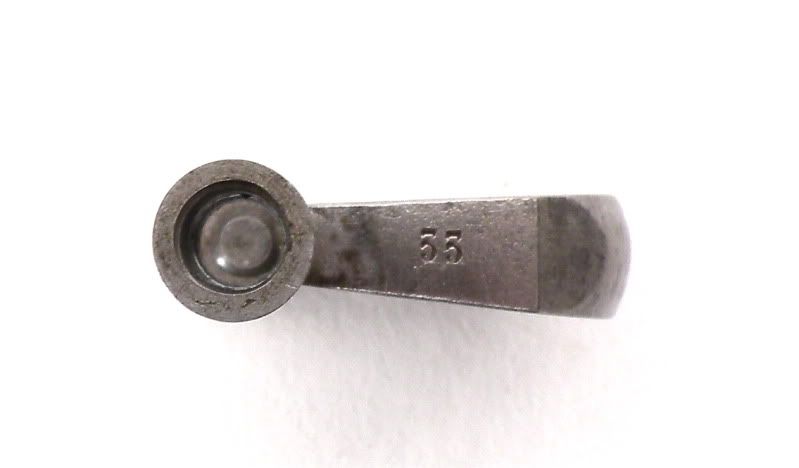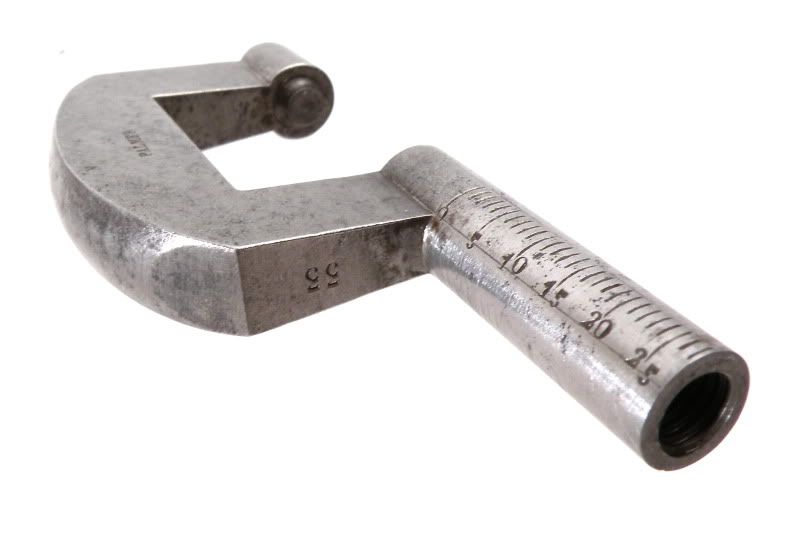rivett608
Diamond
- Joined
- Oct 25, 2002
- Location
- Kansas City, Mo.
I think the best way to start this post off is with a little story... about a month ago someone was in my house and saw my micrometer collection and asked what it was... I proceeded to tell them it was a collection of antique micrometers that contained about every important patent except for the first one... the PALMER!.... I don't have to say that anymore.
For those that don't know, the micrometer as we know it today was invented by Jean Laurent PALMER of Paris in 1848. He was given or shall we say bought a patent no. 7518 on Sept. 7 1848 by the Ministry of Agriculture and Trade. The original idea was use this tool to measure a stack of thin pieces of metal to determine the count.
I have seen no reference to this tool until Messrs. Brown and Sharpe attended the Paris Exposition in Aug. of 1867.... they were trying solve a problem of finding a accurate way to measure the gauge of sheet brass for a customer. This proved the answer and B & S brought out their Pocket Sheet Metal Gauge (the tiny micrometers we see from time to time) based on Palmer's design.... 10 years later they bumped it up to 1" and the development of the micrometer took off like a wild fire.
Back to the originals by PALMER himself....... these are rather rare...... actually rarer than I first thought.... as a matter of fact the example at the Science Museum in London is a replica..... I have only been able to confirm (as in I seen or have photos of them) 3 known examples .... there are few more unconfirmed examples which I'm chasing and I am sure there a bunch out there just never identified so check what is lurking in your junk box. Now for the fun part.... you have to understand that to this day in France ALL micrometers are called Palmer's....... I will define the early ones as being stamped by PALMER and having these other stamps "Brevete, S. Gar. du Gouvt"........ by the way this means Patented, without guarantee of the Government........ which is a quirk of the French patent law of 1844 which basically said we trust the patentee and are not even going to bother looking at the invention to see if it works.
Now when one gets something like this how do you start to date it and see if it is real....... well you go to a example that has provenance... in this case the one owed by the Smithsonian, item 313,691.... this gift was offered to the museum in 1951 by a Mr. Bisson.... it was brought to the USA in 1857 by his Grandfather. One thing to take note of is the way it is stamped.... there is a chip in the letter "A" of Palmer and the "V" in Brevete... my example has those same features, it also appears from what we can see in the old poorly reproduced photos the B & S on brought back in 1867 also has these faults, hence they came off the same bench. Now the most obvious thing is the shape of the frame, the Smithsonian one, mine and one in a private collection all have a rounded frame, I believe this to be the earliest style.... while the drawing on the patent shows a squared frame as is the B & S example. It would have most likely been the newest model at the exposition in 1867 from which B & S brought theirs back from. You don't take your old stuff to a trade show.
Now think how many micrometers have been made in the world.... I would think a million or more.... and this is one of the FIRST!
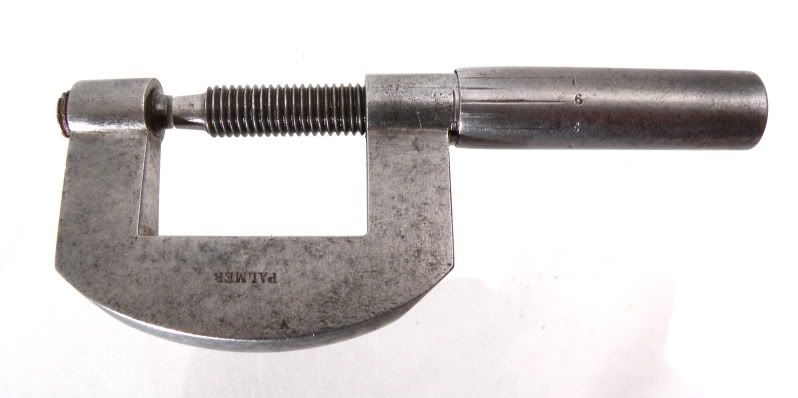
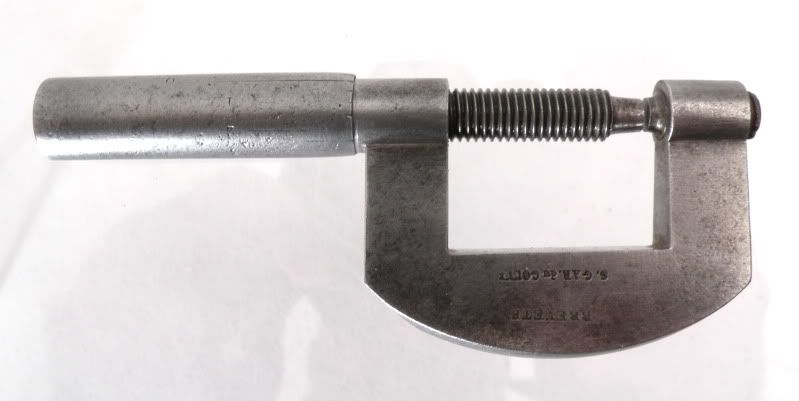
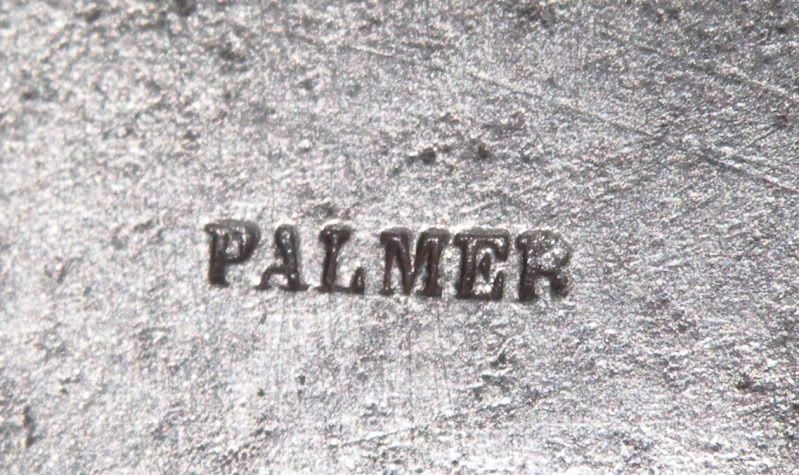
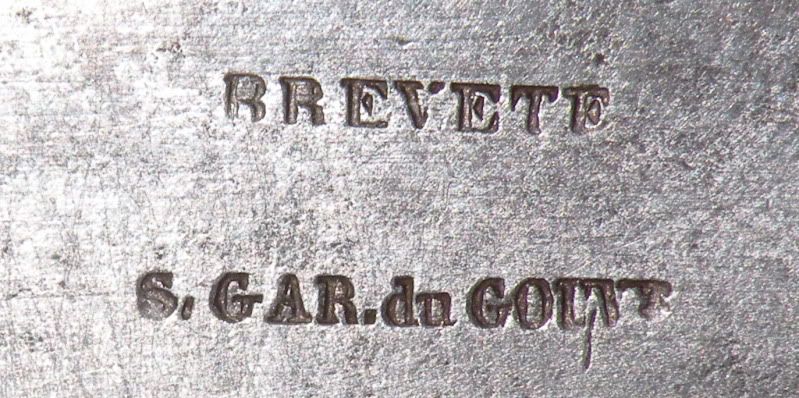
For those that don't know, the micrometer as we know it today was invented by Jean Laurent PALMER of Paris in 1848. He was given or shall we say bought a patent no. 7518 on Sept. 7 1848 by the Ministry of Agriculture and Trade. The original idea was use this tool to measure a stack of thin pieces of metal to determine the count.
I have seen no reference to this tool until Messrs. Brown and Sharpe attended the Paris Exposition in Aug. of 1867.... they were trying solve a problem of finding a accurate way to measure the gauge of sheet brass for a customer. This proved the answer and B & S brought out their Pocket Sheet Metal Gauge (the tiny micrometers we see from time to time) based on Palmer's design.... 10 years later they bumped it up to 1" and the development of the micrometer took off like a wild fire.
Back to the originals by PALMER himself....... these are rather rare...... actually rarer than I first thought.... as a matter of fact the example at the Science Museum in London is a replica..... I have only been able to confirm (as in I seen or have photos of them) 3 known examples .... there are few more unconfirmed examples which I'm chasing and I am sure there a bunch out there just never identified so check what is lurking in your junk box. Now for the fun part.... you have to understand that to this day in France ALL micrometers are called Palmer's....... I will define the early ones as being stamped by PALMER and having these other stamps "Brevete, S. Gar. du Gouvt"........ by the way this means Patented, without guarantee of the Government........ which is a quirk of the French patent law of 1844 which basically said we trust the patentee and are not even going to bother looking at the invention to see if it works.
Now when one gets something like this how do you start to date it and see if it is real....... well you go to a example that has provenance... in this case the one owed by the Smithsonian, item 313,691.... this gift was offered to the museum in 1951 by a Mr. Bisson.... it was brought to the USA in 1857 by his Grandfather. One thing to take note of is the way it is stamped.... there is a chip in the letter "A" of Palmer and the "V" in Brevete... my example has those same features, it also appears from what we can see in the old poorly reproduced photos the B & S on brought back in 1867 also has these faults, hence they came off the same bench. Now the most obvious thing is the shape of the frame, the Smithsonian one, mine and one in a private collection all have a rounded frame, I believe this to be the earliest style.... while the drawing on the patent shows a squared frame as is the B & S example. It would have most likely been the newest model at the exposition in 1867 from which B & S brought theirs back from. You don't take your old stuff to a trade show.
Now think how many micrometers have been made in the world.... I would think a million or more.... and this is one of the FIRST!






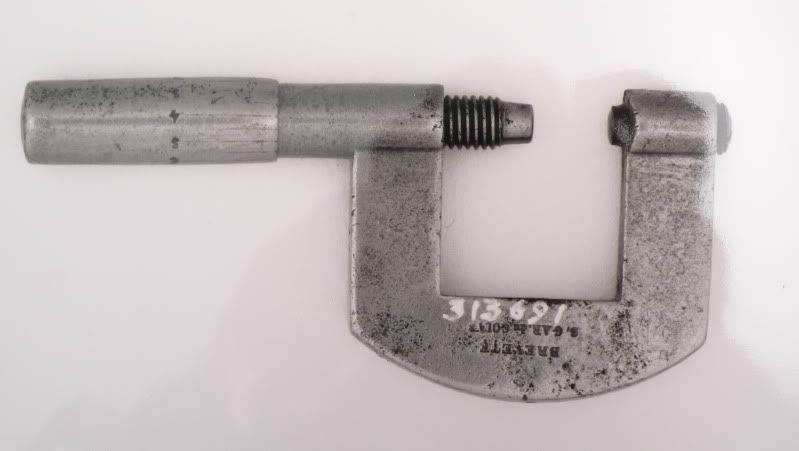
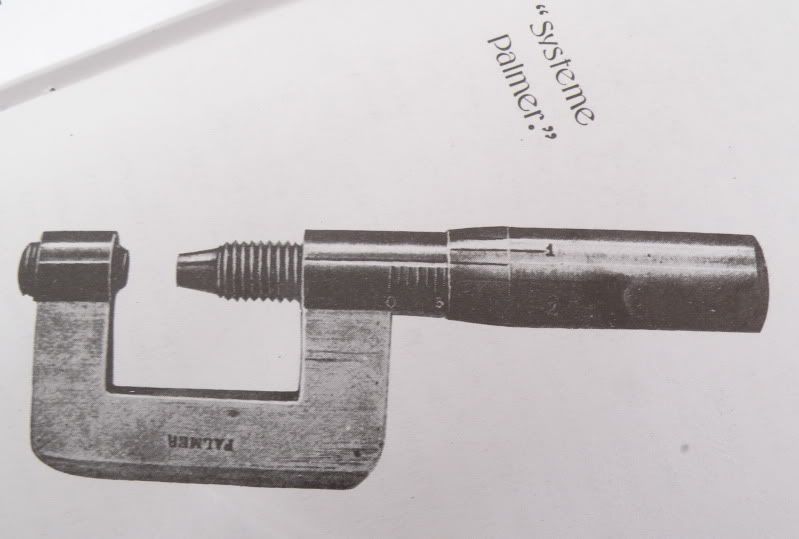


 )
)
